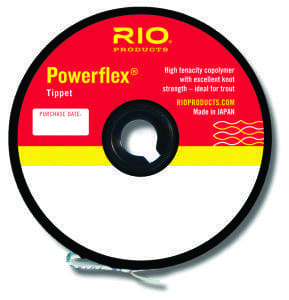There are many aspects to fly fishing. Rods, reels, fly line, flies, techniques are all “sexy” topics and get most of the press but none can be more important than the boring subject of knots. If you use the incorrect knot or tie it incorrectly, the fish is lost, no matter what gear or technique you used.
Fly fishing knots can be different from knots used in other types of fishing; bait casting, spin casting, using big lures, etc. I use the Palomar knot when I’m fishing for Musky and Pike for example. This knot would be impossible to use if fishing with a size 18 midge. Of course, there are knots for attaching backing to the fly line, fly line to a leader, and tippet to tippet. What I want to discuss is the knot to use when tying on your fly to your tippet. So what is the best fly fishing knot to use when tying your fly to your tippet? Well, I think that depends on the individual fly fisher.
For many years, I used the improved clinch knot. Probably because it’s the knot I learned as a kid. Some say the regular clinch knot is just as good. There is also the Orvis knot, the Davy knot, the Uni-knot and more. So here is a knot I have switched to and would love for you to consider.
Well, before I tell you I have to add a caveat to this discussion. If you don’t tie your knots well then any knot you tie will fail. No knot will give you 100% of the line strength but you sure would like to get close to it. You must tie your knots well, moisten the knot (with saliva for example) before pulling it slowly tight and pull on it to make sure it will hold. Also, you must consider several things when deciding on which knot to use tying your tippet to the fly. The kind and hook size of the fly you will be using and the thickness of the wire in the hook eye. The diameter or size tippet you are using. The kind of action you want from your fly and even the tippet material that you are using. Don’t lose the fish of a lifetime by tying just any old knot because you were lazy.
Now, let’s get back to tying flies onto your tippet. Again, for purposes of this discussion I am talking about a knot that is excellent for flies from size 28 to 8. I have become a convert from using the improved clinch knot to now using the Double Davy knot (thank you Pete). Now, I do not use the Davy knot but the Double Davy knot. I think there is a difference in strength between the two. I read a knot test that was done with four knots; improved clinch knot, the clinch knot, the Davy knot and the Double Davy knot. The Double Davy, in this particular test, proved to be the strongest. And after tying this knot for the past 10 months, I will have to agree. I have done the tree test many times this year (you know, you get stuck in a tree and pull the fly out – or not). Using the tree test, I have lost the majority of my flies at my double surgeon’s knot than at the double Davy knot.

The Double Davy is an easy knot to tie and creates a smaller knot at the eye of the fly than the improved clinch knot or clinch knot. Smaller, stronger knot is what I like, especially when using tiny flies.
Google the Double Davy knot and try it out. If you see me on the water ask me about it and I’ll show you how I tie my “new” knot for tying flies on to my tippet. What is your favorite knot and …….why?
